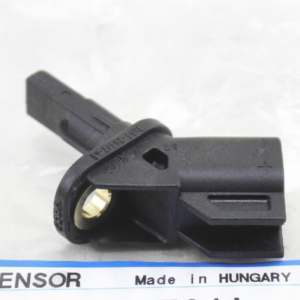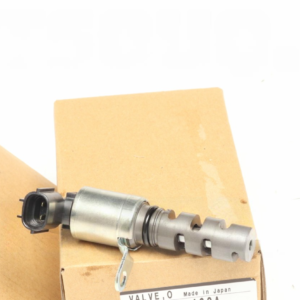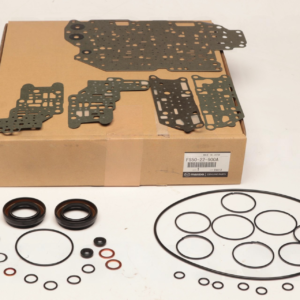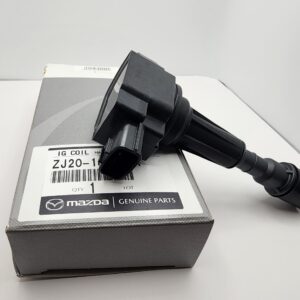**Inlet Manifold Gasket: The Unsung Hero of Engine Performance**
In the intricate realm of automotive engineering, where power and precision merge, one often-overlooked component quietly ensures the efficiency of engine operation—the inlet manifold gasket. While engines roar with power and efficiency, it’s the gasket within the inlet manifold that seals the fate of air intake, ensuring seamless combustion and optimal performance. Join us as we delve into the significance, functionality, and importance of inlet manifold gaskets in the realm of automotive technology.
**Understanding the Essence: What is an Inlet Manifold Gasket?**
An inlet manifold gasket is a critical sealing component located between the intake manifold and cylinder head(s) of an internal combustion engine. Its primary function is to seal the mating surfaces between the intake manifold and cylinder head(s), ensuring proper sealing of the intake passages and preventing air leaks.
**The Evolution of Engine Intake Systems**
In the early days of automotive engineering, engine intake systems were relatively simple, consisting of carburetors or throttle bodies attached directly to the intake manifold. However, as engines became more powerful and fuel-efficient, the need for more sophisticated intake systems became apparent. Inlet manifold gaskets emerged as a transformative technology, enabling engines to achieve higher performance and efficiency.
**The Significance of Airflow Efficiency**
In the dynamic environment of modern driving, where engines demand precise air-fuel mixture control, airflow efficiency is crucial for engine performance and fuel economy. Inlet manifold gaskets play a pivotal role in this regard, ensuring that air entering the combustion chambers is properly metered and distributed, maximizing combustion efficiency and power output.
**The Silent Performer: How Does an Inlet Manifold Gasket Work?**
Despite its unassuming appearance, the inlet manifold gasket employs sophisticated engineering principles to fulfill its role effectively. Most inlet manifold gaskets are made of durable materials such as rubber, silicone, or composite blends, designed to withstand the heat, pressure, and mechanical stresses encountered in the engine.
When installed between the intake manifold and cylinder head(s), the inlet manifold gasket forms a tight seal, preventing air leaks and ensuring that the engine receives the correct amount of air for combustion. This optimizes engine performance, fuel efficiency, and emissions control.
**The Unseen Benefits: Advantages of Inlet Manifold Gaskets**
While inlet manifold gaskets may operate quietly behind the scenes, their impact on engine performance and reliability is undeniable. Here are some key advantages:
1. **Optimized Airflow:** Inlet manifold gaskets ensure proper sealing of intake passages, maximizing airflow efficiency and engine performance.
2. **Prevent Air Leaks:** By sealing the mating surfaces between the intake manifold and cylinder head(s), inlet manifold gaskets prevent air leaks that can disrupt engine operation and reduce efficiency.
3. **Enhanced Combustion:** Proper airflow control facilitated by inlet manifold gaskets results in more efficient combustion, maximizing power output and fuel economy.
4. **Reduced Emissions:** Optimized combustion facilitated by inlet manifold gaskets helps minimize emissions of harmful pollutants, contributing to cleaner air and compliance with emissions regulations.
**Looking Ahead: The Future of Engine Intake Technology**
As automotive technology continues to advance, so too will the field of engine intake technology. Innovations in inlet manifold gasket design, materials, and manufacturing processes may lead to even more efficient and reliable sealing solutions in the future. Furthermore, as vehicles transition towards electrification and alternative powertrains, inlet manifold gaskets will continue to play a crucial role in optimizing engine performance and efficiency.
**In Conclusion: Sealing the Path to Performance**
In the dynamic world of automotive engineering, where precision and efficiency are paramount, inlet manifold gaskets emerge as silent but indispensable guardians of engine performance. Their unassuming presence belies their critical importance in ensuring proper airflow control, combustion efficiency, and power output. So, the next time you feel the surge of power beneath your feet, remember to thank the unsung hero working diligently behind the scenes—the inlet manifold gasket.
In stock (can be backordered)
$3,500.00
**Inlet Manifold Gasket: The Unsung Hero of Engine Performance**
In the intricate realm of automotive engineering, where power and precision merge, one often-overlooked component quietly ensures the efficiency of engine operation—the inlet manifold gasket. While engines roar with power and efficiency, it’s the gasket within the inlet manifold that seals the fate of air intake, ensuring seamless combustion and optimal performance. Join us as we delve into the significance, functionality, and importance of inlet manifold gaskets in the realm of automotive technology.
**Understanding the Essence: What is an Inlet Manifold Gasket?**
An inlet manifold gasket is a critical sealing component located between the intake manifold and cylinder head(s) of an internal combustion engine. Its primary function is to seal the mating surfaces between the intake manifold and cylinder head(s), ensuring proper sealing of the intake passages and preventing air leaks.
**The Evolution of Engine Intake Systems**
In the early days of automotive engineering, engine intake systems were relatively simple, consisting of carburetors or throttle bodies attached directly to the intake manifold. However, as engines became more powerful and fuel-efficient, the need for more sophisticated intake systems became apparent. Inlet manifold gaskets emerged as a transformative technology, enabling engines to achieve higher performance and efficiency.
**The Significance of Airflow Efficiency**
In the dynamic environment of modern driving, where engines demand precise air-fuel mixture control, airflow efficiency is crucial for engine performance and fuel economy. Inlet manifold gaskets play a pivotal role in this regard, ensuring that air entering the combustion chambers is properly metered and distributed, maximizing combustion efficiency and power output.
**The Silent Performer: How Does an Inlet Manifold Gasket Work?**
Despite its unassuming appearance, the inlet manifold gasket employs sophisticated engineering principles to fulfill its role effectively. Most inlet manifold gaskets are made of durable materials such as rubber, silicone, or composite blends, designed to withstand the heat, pressure, and mechanical stresses encountered in the engine.
When installed between the intake manifold and cylinder head(s), the inlet manifold gasket forms a tight seal, preventing air leaks and ensuring that the engine receives the correct amount of air for combustion. This optimizes engine performance, fuel efficiency, and emissions control.
**The Unseen Benefits: Advantages of Inlet Manifold Gaskets**
While inlet manifold gaskets may operate quietly behind the scenes, their impact on engine performance and reliability is undeniable. Here are some key advantages:
1. **Optimized Airflow:** Inlet manifold gaskets ensure proper sealing of intake passages, maximizing airflow efficiency and engine performance.
2. **Prevent Air Leaks:** By sealing the mating surfaces between the intake manifold and cylinder head(s), inlet manifold gaskets prevent air leaks that can disrupt engine operation and reduce efficiency.
3. **Enhanced Combustion:** Proper airflow control facilitated by inlet manifold gaskets results in more efficient combustion, maximizing power output and fuel economy.
4. **Reduced Emissions:** Optimized combustion facilitated by inlet manifold gaskets helps minimize emissions of harmful pollutants, contributing to cleaner air and compliance with emissions regulations.
**Looking Ahead: The Future of Engine Intake Technology**
As automotive technology continues to advance, so too will the field of engine intake technology. Innovations in inlet manifold gasket design, materials, and manufacturing processes may lead to even more efficient and reliable sealing solutions in the future. Furthermore, as vehicles transition towards electrification and alternative powertrains, inlet manifold gaskets will continue to play a crucial role in optimizing engine performance and efficiency.
**In Conclusion: Sealing the Path to Performance**
In the dynamic world of automotive engineering, where precision and efficiency are paramount, inlet manifold gaskets emerge as silent but indispensable guardians of engine performance. Their unassuming presence belies their critical importance in ensuring proper airflow control, combustion efficiency, and power output. So, the next time you feel the surge of power beneath your feet, remember to thank the unsung hero working diligently behind the scenes—the inlet manifold gasket.
| Weight | 0.01 kg |
|---|---|
| Warehouse | Inventory at warehouse 2 |




Get E-mail updates about our latest products and special offers.
Sensors and More is Jamaica’s ultimate online auto parts store. Established in 2020, we specialize in genuine electrical parts for Japanese, Read more…
Reviews
There are no reviews yet.